King Kong — The FX masterpiece of the 30s —
by FX
King Kong (1933) is the greatest effects film of the 30s. It is such a boundary breaking classic that I have to talk about it !

King Kong was undoubtedly the most extraordinary technical achievement of its time. It used actually every technique available at the period, including animation, miniatures, matte paintings (painted artwork, usually of a location, combined with live-action footage), travelling mattes (techniques which convincingly combine images that have been filmed at different times or locations), rear projection (a method combining live-action foregrounds with pre-filmed background scenery), and miniature rear projection.
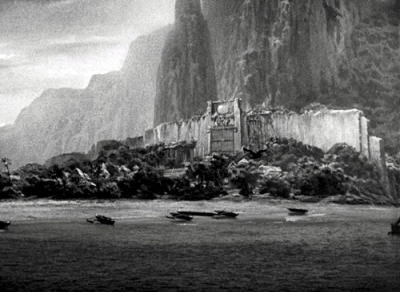
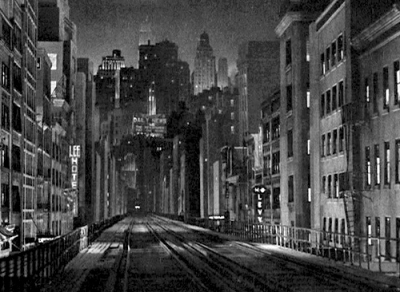 Matte paintings were used to portray many locations including the established shots of Skull Island and the New York skyline.
Matte paintings were used to portray many locations including the established shots of Skull Island and the New York skyline.
Willis O’Brien, who previously directed the FX for The Lost World in 1925, brought the story to life by supervising the special effects. He called Marcel Delgado (a sculptor and model maker he worked with on The Lost World) to create the marvelous model creatures of the film. At this time the team composed of Delgado and O’Brien was one of the most respected special effects crews in Hollywood, particularly for their special skills in building miniature creatures and sets as well as in stop-motion animation.
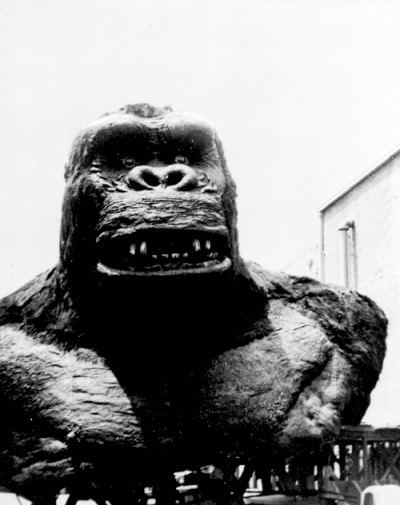
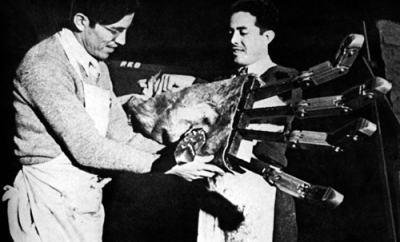 The mighty Kong was portrayed by a 46 cm puppet made of an assemblage of metal, rubber and fur. For Kong, Delgado even stretched rubber tendons between joints to give the ape a realistic sinewy appearance. A full-size bust, arm and leg were built for close-ups. Stop-motion was used for animating the Kong puppet, just as the Skull Island dinosaurs, and the attacking aircraft sequences.
The mighty Kong was portrayed by a 46 cm puppet made of an assemblage of metal, rubber and fur. For Kong, Delgado even stretched rubber tendons between joints to give the ape a realistic sinewy appearance. A full-size bust, arm and leg were built for close-ups. Stop-motion was used for animating the Kong puppet, just as the Skull Island dinosaurs, and the attacking aircraft sequences.
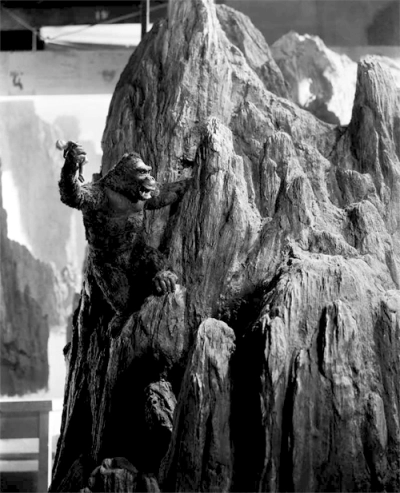 A nice behind the scenes photo revealing the detail of the model miniatures and the size of the matte painting backings.
A nice behind the scenes photo revealing the detail of the model miniatures and the size of the matte painting backings.
For King Kong, O’Brien needed to mix real-life actors with his animated wonders. He used a FX process called “rear projection“ which greatly developed in the early 1930s. After much experimentation, O’Brien and his team perfected a method of miniature rear projection. Small jungle sets were built with small areas where images could be rear-projected on to miniature screens. Before each shot was filed, many tests were made in order to match the lighting of the miniature set with the exposure of the rear-projected images. During animation, the model creatures were manipulated fractionally, the rear-projected image was advanced by one frame, and a frame of the composite image photographed before the process was repeated.
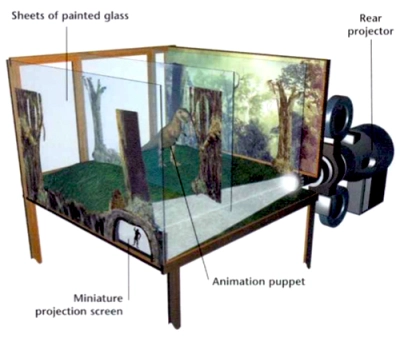 Miniature rear projection process.
Miniature rear projection process.
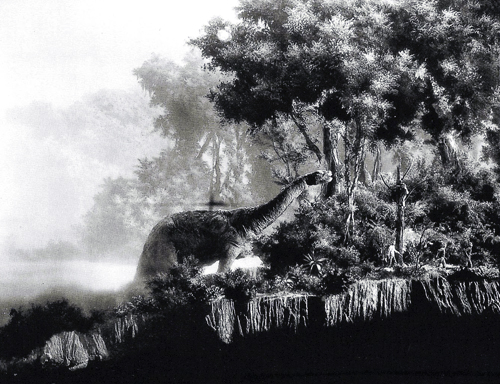 A model dinosaur through O’Brien’s atmospheric forest settings. The bottom of the image has been matted out to receive a live-action element.
A model dinosaur through O’Brien’s atmospheric forest settings. The bottom of the image has been matted out to receive a live-action element.
The animation of Kong took over a year to complete. Some animation sessions turned into marathon events. Once started, the animation of a shot continued until it was finished ; the animation team quickly learned that shots begun one working day and completed the next one because of the stop-motion process shooting one frame at time… There were other unexpected hitches in the animation process. On one occasion an animator was halfway through a shot when he noticed that a pair of pliers left on the set was just visible in the bottom of the frame. Not wanting to start the sequence afresh, the animator slowly animated the out-of-focus grey shape out of the shot, hoping that it would look like a passing jungle creature !…
While a team of animators achieved much of the animation of Kong in long-shot, O’Brien animated particularly emotional scenes and close-ups himself. As a result, Kong remains perhaps the most emotive creature to have been created for the screen and deserves its nickname : the “Eight Wonder“. King Kong was a sensational hit on its release and again when re-released in 1952. The public flocked to see the film, thrilled by both the story and the wonders of a lifelike giant ape.
There have been so many versions of King Kong. Which one do you like best? Are the computer graphics of Peter Jackson’s version superior to the techniques in the Willis O’Brien version that you’ve just described?